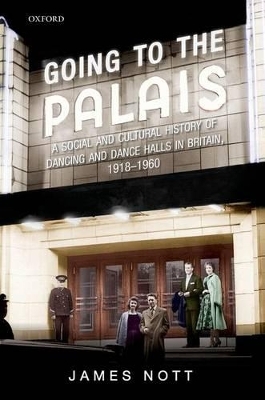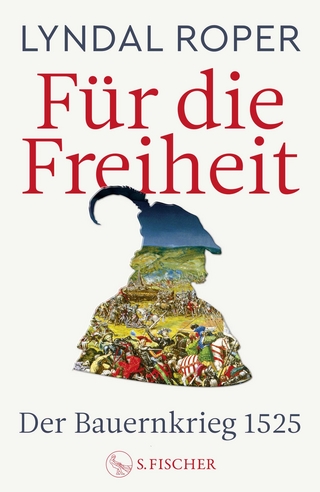
Going to the Palais
A Social And Cultural History of Dancing and Dance Halls in Britain, 1918-1960
Seiten
2015
Oxford University Press (Verlag)
978-0-19-960519-4 (ISBN)
Oxford University Press (Verlag)
978-0-19-960519-4 (ISBN)
From the Charleston to the Twist, Going to the Palais provides a lively and vivid account of dancing and its interaction with race, gender, class, and national identity in Britain from 1918 to 1960, exploring the pivotal role dancehalls and dancing played in twentieth-century British social and cultural history.
From the mid-1920s, the dance hall occupied a pivotal place in the culture of working- and lower-middle-class communities in Britain - a place rivalled only by the cinema and eventually to eclipse even that institution in popularity. Going to the Palais examines the history of this vital social and cultural institution, exploring the dances, dancers, and dance venues that were at the heart of one of twentieth-century Britain's most significant leisure activities.
Going to the Palais has several key focuses. First, it explores the expansion of the dance hall industry and the development of a 'mass audience' for dancing between 1918 and 1960. Second, the impact of these changes on individuals and communities is examined, with a particular concentration on working and lower-middle-class communities, and on young men and women. Third, the cultural impact of dancing and dance halls is explored. A key aspect of this debate is an examination of how Britain's dance culture held up against various standardizing processes (commercialization, Americanization, etc.) over the period, and whether we can see the emergence of a 'national' dance culture. Finally, the volume offers an assessment of wider reactions to dance halls and dancing in the period. Going to the Palais is concerned with the complex relationship between discourses of class, culture, gender, and national identity and how they overlap - how cultural change, itself a response to broader political, social, and economic developments, was helping to change notions of class, gender, and national identity.
From the mid-1920s, the dance hall occupied a pivotal place in the culture of working- and lower-middle-class communities in Britain - a place rivalled only by the cinema and eventually to eclipse even that institution in popularity. Going to the Palais examines the history of this vital social and cultural institution, exploring the dances, dancers, and dance venues that were at the heart of one of twentieth-century Britain's most significant leisure activities.
Going to the Palais has several key focuses. First, it explores the expansion of the dance hall industry and the development of a 'mass audience' for dancing between 1918 and 1960. Second, the impact of these changes on individuals and communities is examined, with a particular concentration on working and lower-middle-class communities, and on young men and women. Third, the cultural impact of dancing and dance halls is explored. A key aspect of this debate is an examination of how Britain's dance culture held up against various standardizing processes (commercialization, Americanization, etc.) over the period, and whether we can see the emergence of a 'national' dance culture. Finally, the volume offers an assessment of wider reactions to dance halls and dancing in the period. Going to the Palais is concerned with the complex relationship between discourses of class, culture, gender, and national identity and how they overlap - how cultural change, itself a response to broader political, social, and economic developments, was helping to change notions of class, gender, and national identity.
James Nott is a social and cultural historian specialising in twentieth-century British culture and society. He is author of Music for the People: Popular Music and Dance in Interwar Britain (2002) and co-editor of Classes, Politics, and Cultures: Essays in British History in Honour of Ross McKibbin (2011). He is currently working on a history of masculinity in twentieth century Britain and the links between race and dance.
PART I: DANCING, THE DANCE HALL INDUSTRY, AND ITS AUDIENCE; PART II: THE DANCE HALL AND BRITISH SOCIETY, 1918-1960; PART III: CONFLICTS AND CONTROL: MORAL PANIC AND THE DANCE HALL 1918-1960
| Erscheint lt. Verlag | 1.10.2015 |
|---|---|
| Zusatzinfo | 23 black and white illustrations |
| Verlagsort | Oxford |
| Sprache | englisch |
| Maße | 174 x 240 mm |
| Gewicht | 674 g |
| Themenwelt | Sachbuch/Ratgeber ► Sport ► Tanzen / Tanzsport |
| Geschichte ► Allgemeine Geschichte ► Neuzeit (bis 1918) | |
| Geisteswissenschaften ► Geschichte ► Regional- / Ländergeschichte | |
| Geschichte ► Teilgebiete der Geschichte ► Kulturgeschichte | |
| Sozialwissenschaften ► Soziologie | |
| ISBN-10 | 0-19-960519-X / 019960519X |
| ISBN-13 | 978-0-19-960519-4 / 9780199605194 |
| Zustand | Neuware |
| Informationen gemäß Produktsicherheitsverordnung (GPSR) | |
| Haben Sie eine Frage zum Produkt? |
Mehr entdecken
aus dem Bereich
aus dem Bereich
Giordano Bruno - ein ketzerisches Leben
Buch | Hardcover (2024)
C.H.Beck (Verlag)
29,90 €


